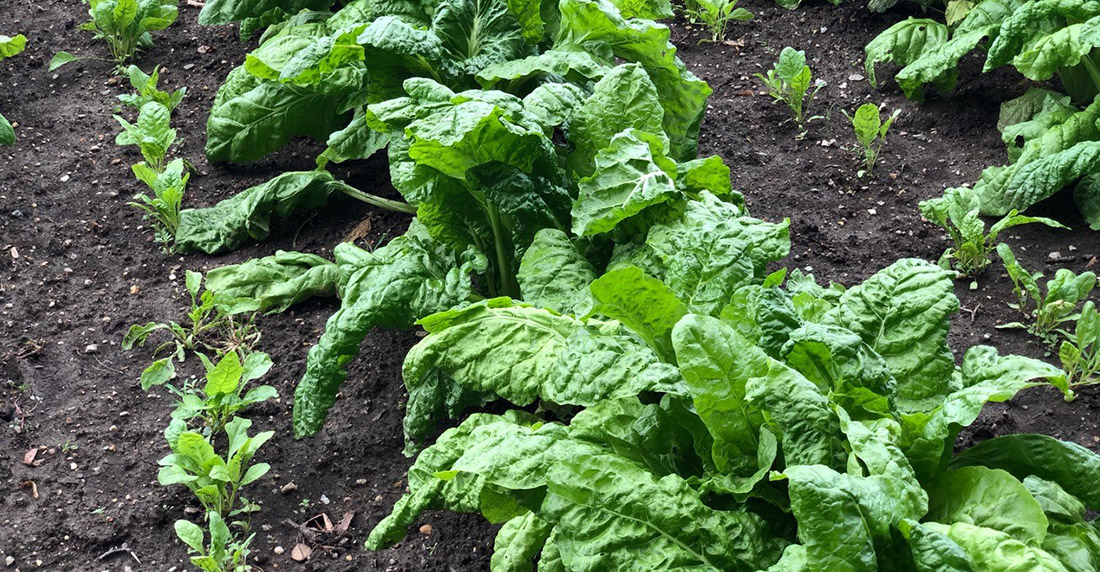Niki Jabbour
Planting a home vegetable garden is a great way to enjoy some of your favourite vegetables and herbs, and perhaps even save a little grocery money. In order to maximize production I practice three simple techniques: intensive planting, succession planting, and vertical gardening. These techniques can be used in any sized space, including small urban gardens or container plantings.
Intensive planting
Intensive planting is growing your crops closer together. This means a bigger harvest, but also fewer weeds and less watering as the foliage canopy shades the soil. Intensive planting is made easy in raised beds where pathways are permanent and the soil is never compacted by wandering feet. When planting seeds or seedlings, I refer to the seed packet to see how large the plants will grow. Every variety is different and my goal to space plants so that the foliage just grows together at maturity. Bush bean seeds are planted three inches apart, seed potatoes a foot apart, and heading types of lettuce, like butterhead are planted in a grid pattern ten inches apart. I also like to fill the corners and edges of my beds with herbs like basil, curly parsley, oregano, and flowers like nasturtiums, calendula, and sweet alyssum. Just remember that any open space is an invitation to weeds so try to plant the entire bed with vegetables, herbs, or flowers. To support intensive gardening, feed your soil well before planting. I amend with compost, aged manures, and a balanced slow release organic fertilizer.
Succession planting
Growing up, our vegetable garden was a summer plot. We planted it in late May and harvested most of the vegetables in late July and August. Whenever a certain vegetable had finished production, it was pulled out but never replaced. In reality, we could have harvested far more vegetables from that garden if we had succession planted. Succession planting is planting one crop after another. Most vegetable plants don’t continue to produce for months. Bush beans, for example, produce an abundance of tender pods over two to three weeks. Pole beans produce for up to six weeks. Crops like carrots are best pulled when they reach their ideal size. If left in the garden too long they can become woody or tough. To ensure a continual harvest of high-quality vegetables, I succession plant. As soon as production declines or a harvest is complete, I pull out the spent crop, amend the soil, and replace it with fresh seeds or seedlings. Use your grow lights to produce seedlings, like broccoli or cabbage for transplanting in the summer. It helps to have a succession planting plan in place when you order your seeds in spring. I like to draw a rough map of my beds and write what I want to grow in each one. A bed may start with spring lettuce followed by early summer bush beans, late summer zucchini and autumn spinach.
Vertical gardening
Growing vegetables vertically on trellises, tunnels, netting, string, or other structures offers many benefits. First, you can save in-ground garden space and grow more food. Pole beans, for example, easily outproduce bush beans and use less garden area. Vertically grown vegetables are also generally bothered by fewer pests and diseases. This is because their foliage isn’t laying directly on the ground. It’s also much easier to find and harvest fruits like cucumbers, and beans when the plants are growing up a trellis. There are countless types of supports that can be used for vertical gardening. I like to use trellises made from four by eight foot wire sheets mounted on wooden supports. The sheets of wire mesh are readily available at building supply stores and make a very sturdy trellis. In my polytunnel I hang simple and inexpensive twine strings from cross beams to grow tomatoes and cucumbers vertically. In my raised bed garden, I insert a 7 foot tall one by two length of wood beside each tomato seedlings to support the plant as it grows. Many vegetables can be grown vertically but best bets include pole beans, indeterminate tomatoes, cucumbers, climbing varieties of squash, melons, peas, and cucamelons.

